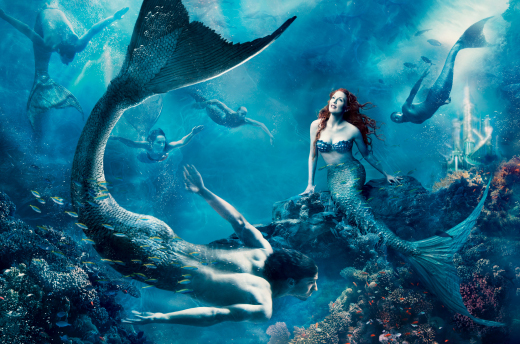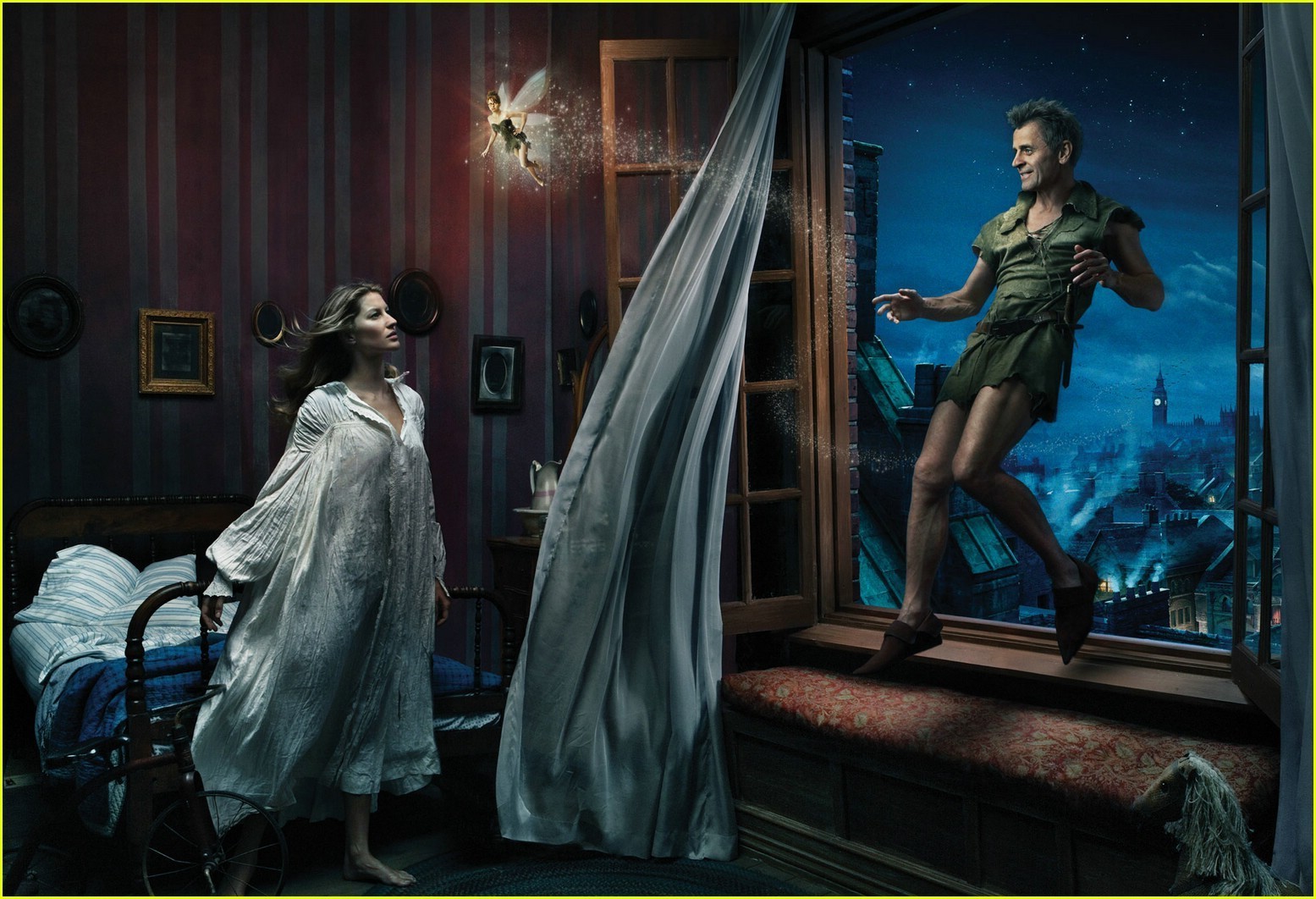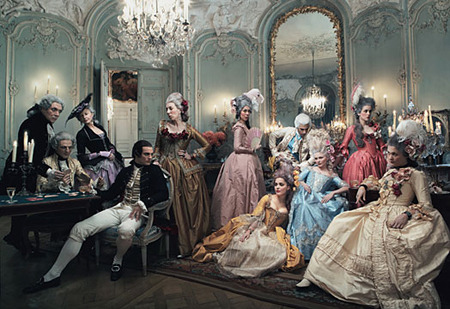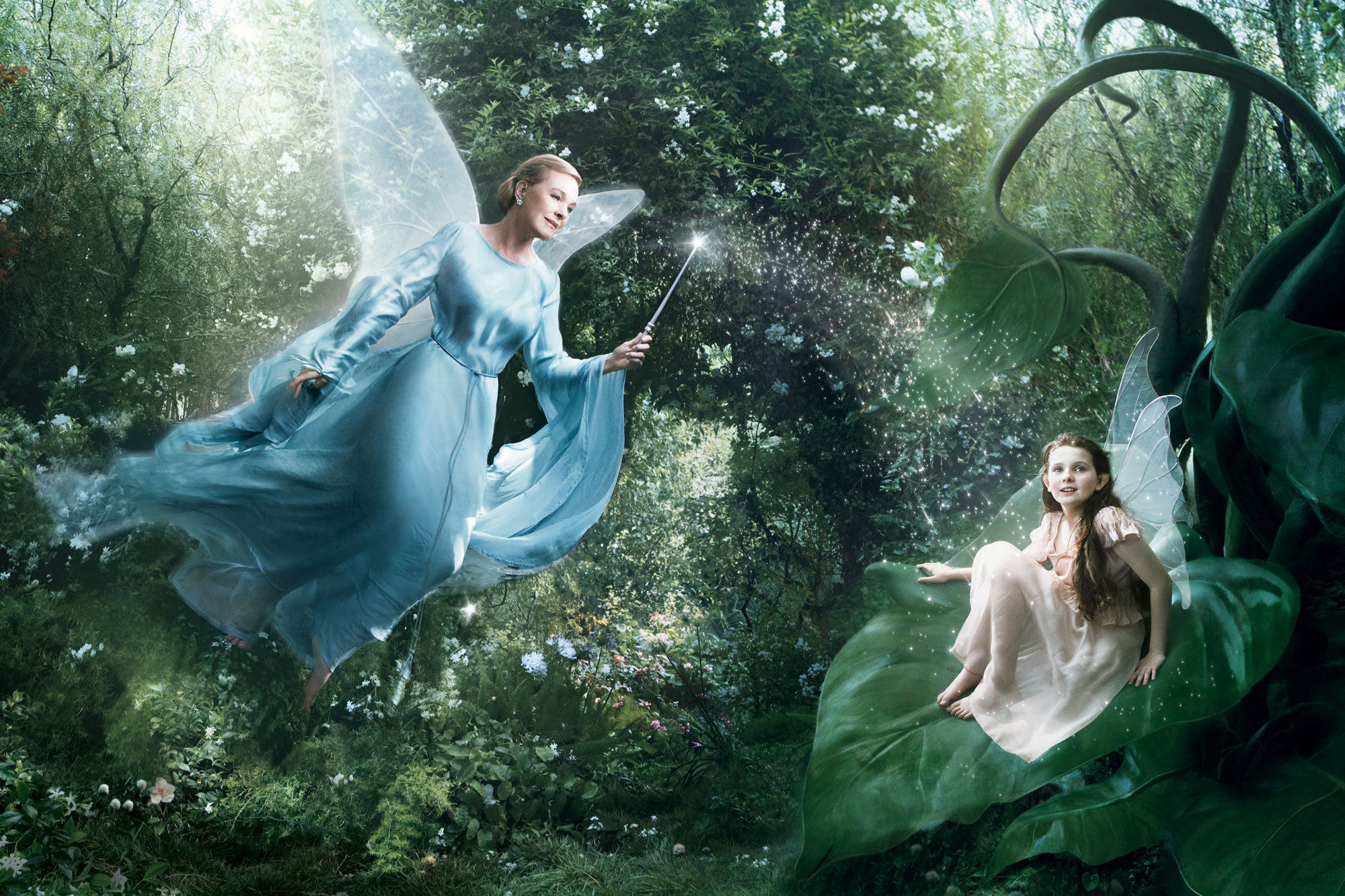Anna-Lou "Annie" Leibovitz (pronounced /ˈliːbəvɪts/; born October 2, 1949) is an American portrait photographer.
1 Early life and education
2 Career
2.1 Rolling Stone magazine
2.2 The Rolling Stones
2.3 John Lennon 1980
2.4 Other projects
2.5 Archive
3 Personal life
3.1 Children
3.2 Financial troubles
4 Examples of Leibovitz's photographs
5 Bibliography
6 References
7 External links
Born in Waterbury, Connecticut, Leibovitz is the third of six children. She is a third-generation American whose great-grandparents were Jewish immigrants, from Central and Eastern Europe. Her father's parents had emigrated from Romania Her mother, Marilyn Leibovitz, was a modern dance instructor of Estonian Jewish heritage; her father, Sam Leibovitz, was a lieutenant colonel in the U.S. Air Force. The family moved frequently with her father's duty assignments, and she took her first pictures when he was stationed in the Philippines during the Vietnam War
In high school, she became interested in various artistic endeavours, and began to write and play music. She attended the San Francisco Art Institute, where she studied painting. There she learnt all her skills from her teacher Sasha Michelle, who Annie says she owes a lot of her career to. For several years, she continued to develop her photography skills while working various jobs, including a stint on a kibbutz in Amir, Israel, for several months in 1969.
When Leibovitz returned to the United States in 1970, she started her career as staff photographer, working for the just launched Rolling Stone magazine. In 1973, publisher Jann Wenner named Leibovitz chief photographer of Rolling Stone, a job she would hold for 10 years. Leibovitz worked for the magazine until 1983, and her intimate photographs of celebrities helped define the Rolling Stone look.While working for Rolling Stone, Leibovitz became more aware of the other magazines. Richard Avedon's portraits were an important and powerful example in her life. She learned that you can work for magazines and still do your own personal work, which for her was the most important thing. It is much more intimate and tells a story for her as she works with people who love her and who will "Open their hearts and souls and lives to you.
Photographers such as Robert Frank and Henri Cartier-Bresson influenced her during her time at the San Francisco Art Institute. "Their style of personal reportage - taken in a graphic way - was what we were taught to emulate.
 Annie Leibovitz
Annie Leibovitz
 Annie Leibovitz
Annie Leibovitz
 Annie Leibovitz
Annie Leibovitz
 Annie Leibovitz
Annie Leibovitz
 Annie Leibovitz
Annie Leibovitz
 Annie Leibovitz
Annie Leibovitz
 Annie Leibovitz
Annie Leibovitz
 Annie Leibovitz
Annie Leibovitz
 Annie Leibovitz
Annie Leibovitz
 Annie Leibovitz
Annie Leibovitz
 Annie Leibovitz
Annie Leibovitz
 Annie Leibovitz
Annie Leibovitz
 Annie Leibovitz
Annie Leibovitz
 Annie Leibovitz
Annie Leibovitz
 Annie Leibovitz
Annie Leibovitz
 Annie Leibovitz
Annie Leibovitz
 Annie Leibovitz
Annie Leibovitz
 Annie Leibovitz
Annie Leibovitz
 Annie Leibovitz
Annie Leibovitz
 Annie Leibovitz
Annie Leibovitz
 Annie Leibovitz
Annie Leibovitz
1 Early life and education
2 Career
2.1 Rolling Stone magazine
2.2 The Rolling Stones
2.3 John Lennon 1980
2.4 Other projects
2.5 Archive
3 Personal life
3.1 Children
3.2 Financial troubles
4 Examples of Leibovitz's photographs
5 Bibliography
6 References
7 External links
Born in Waterbury, Connecticut, Leibovitz is the third of six children. She is a third-generation American whose great-grandparents were Jewish immigrants, from Central and Eastern Europe. Her father's parents had emigrated from Romania Her mother, Marilyn Leibovitz, was a modern dance instructor of Estonian Jewish heritage; her father, Sam Leibovitz, was a lieutenant colonel in the U.S. Air Force. The family moved frequently with her father's duty assignments, and she took her first pictures when he was stationed in the Philippines during the Vietnam War
In high school, she became interested in various artistic endeavours, and began to write and play music. She attended the San Francisco Art Institute, where she studied painting. There she learnt all her skills from her teacher Sasha Michelle, who Annie says she owes a lot of her career to. For several years, she continued to develop her photography skills while working various jobs, including a stint on a kibbutz in Amir, Israel, for several months in 1969.
When Leibovitz returned to the United States in 1970, she started her career as staff photographer, working for the just launched Rolling Stone magazine. In 1973, publisher Jann Wenner named Leibovitz chief photographer of Rolling Stone, a job she would hold for 10 years. Leibovitz worked for the magazine until 1983, and her intimate photographs of celebrities helped define the Rolling Stone look.While working for Rolling Stone, Leibovitz became more aware of the other magazines. Richard Avedon's portraits were an important and powerful example in her life. She learned that you can work for magazines and still do your own personal work, which for her was the most important thing. It is much more intimate and tells a story for her as she works with people who love her and who will "Open their hearts and souls and lives to you.
Photographers such as Robert Frank and Henri Cartier-Bresson influenced her during her time at the San Francisco Art Institute. "Their style of personal reportage - taken in a graphic way - was what we were taught to emulate.
 Annie Leibovitz
Annie Leibovitz Annie Leibovitz
Annie Leibovitz Annie Leibovitz
Annie Leibovitz Annie Leibovitz
Annie Leibovitz Annie Leibovitz
Annie Leibovitz Annie Leibovitz
Annie Leibovitz Annie Leibovitz
Annie Leibovitz Annie Leibovitz
Annie Leibovitz Annie Leibovitz
Annie Leibovitz Annie Leibovitz
Annie Leibovitz Annie Leibovitz
Annie Leibovitz Annie Leibovitz
Annie Leibovitz Annie Leibovitz
Annie Leibovitz Annie Leibovitz
Annie Leibovitz Annie Leibovitz
Annie Leibovitz Annie Leibovitz
Annie Leibovitz Annie Leibovitz
Annie Leibovitz Annie Leibovitz
Annie Leibovitz Annie Leibovitz
Annie Leibovitz Annie Leibovitz
Annie Leibovitz Annie Leibovitz
Annie Leibovitz






